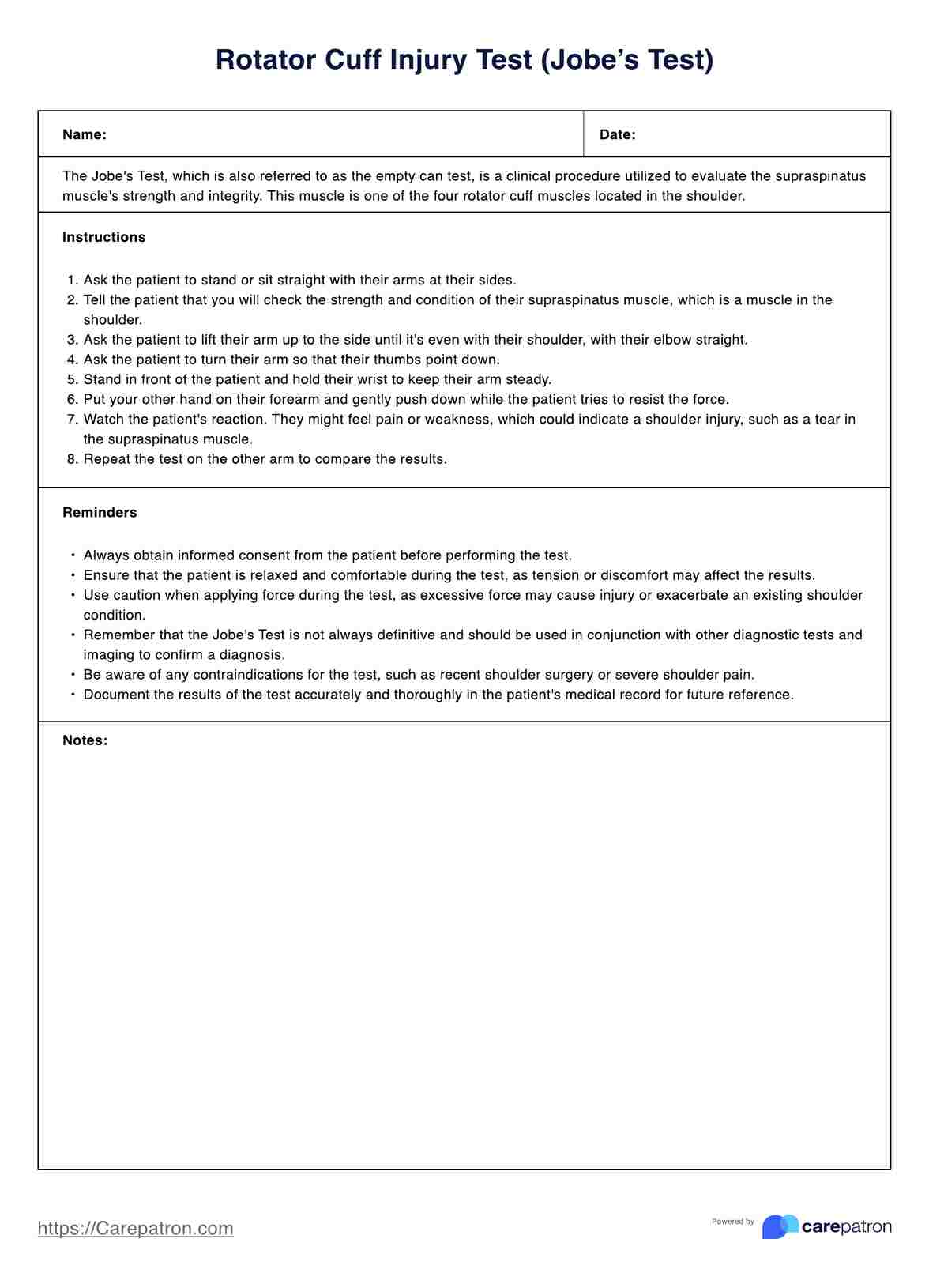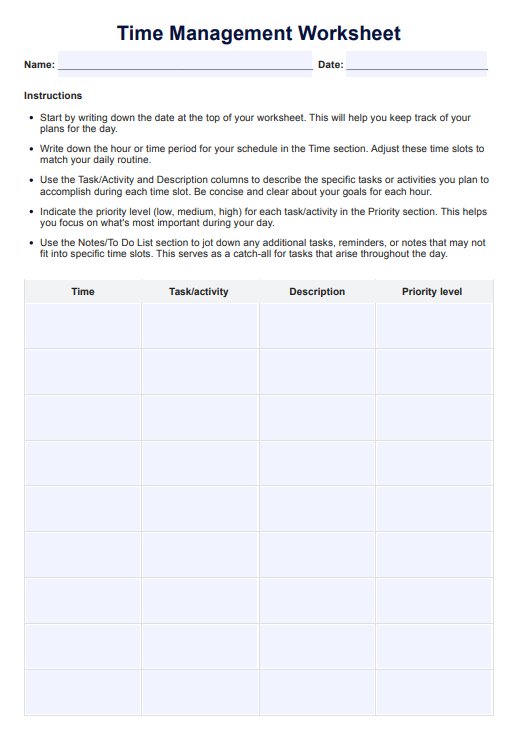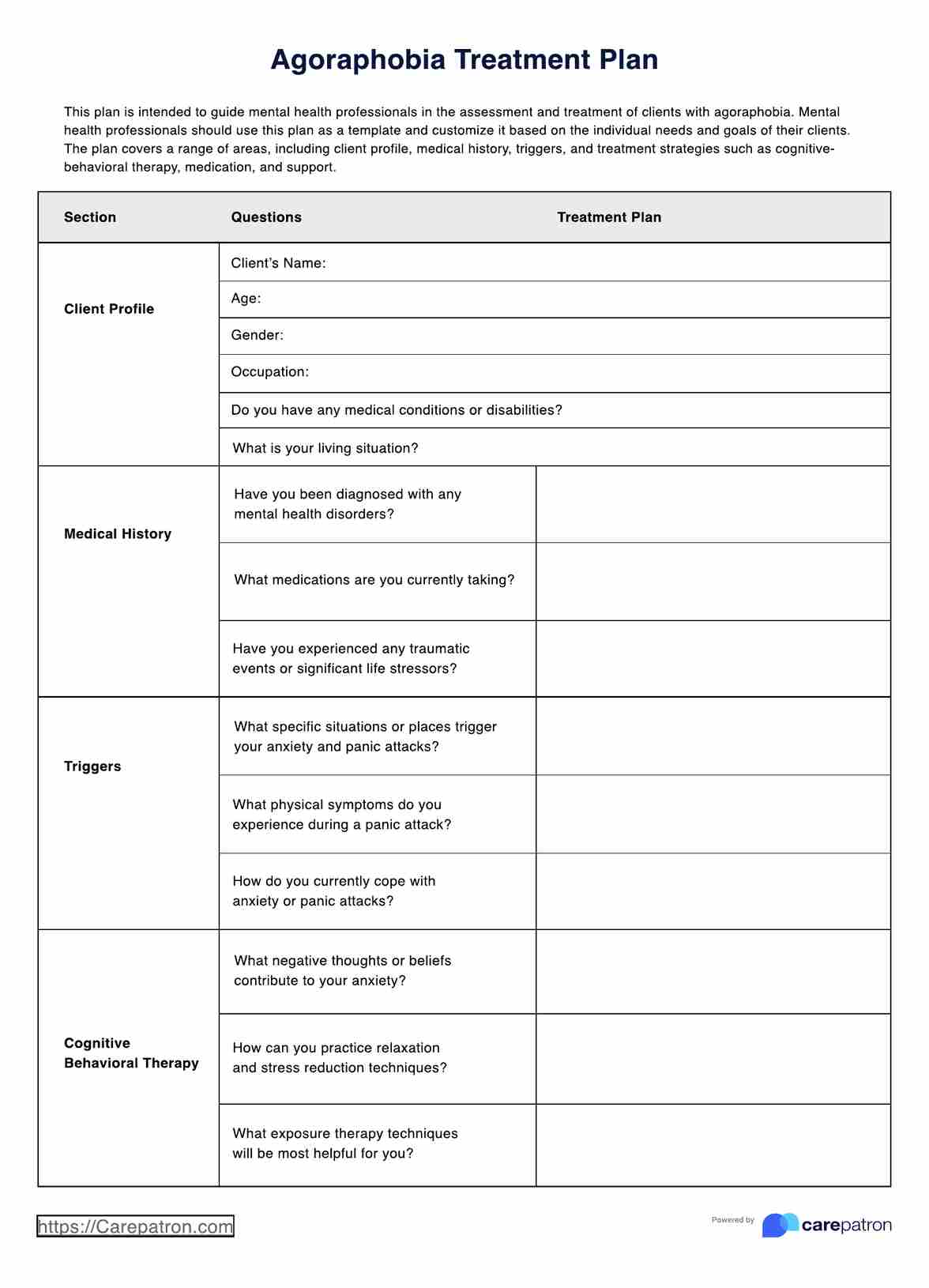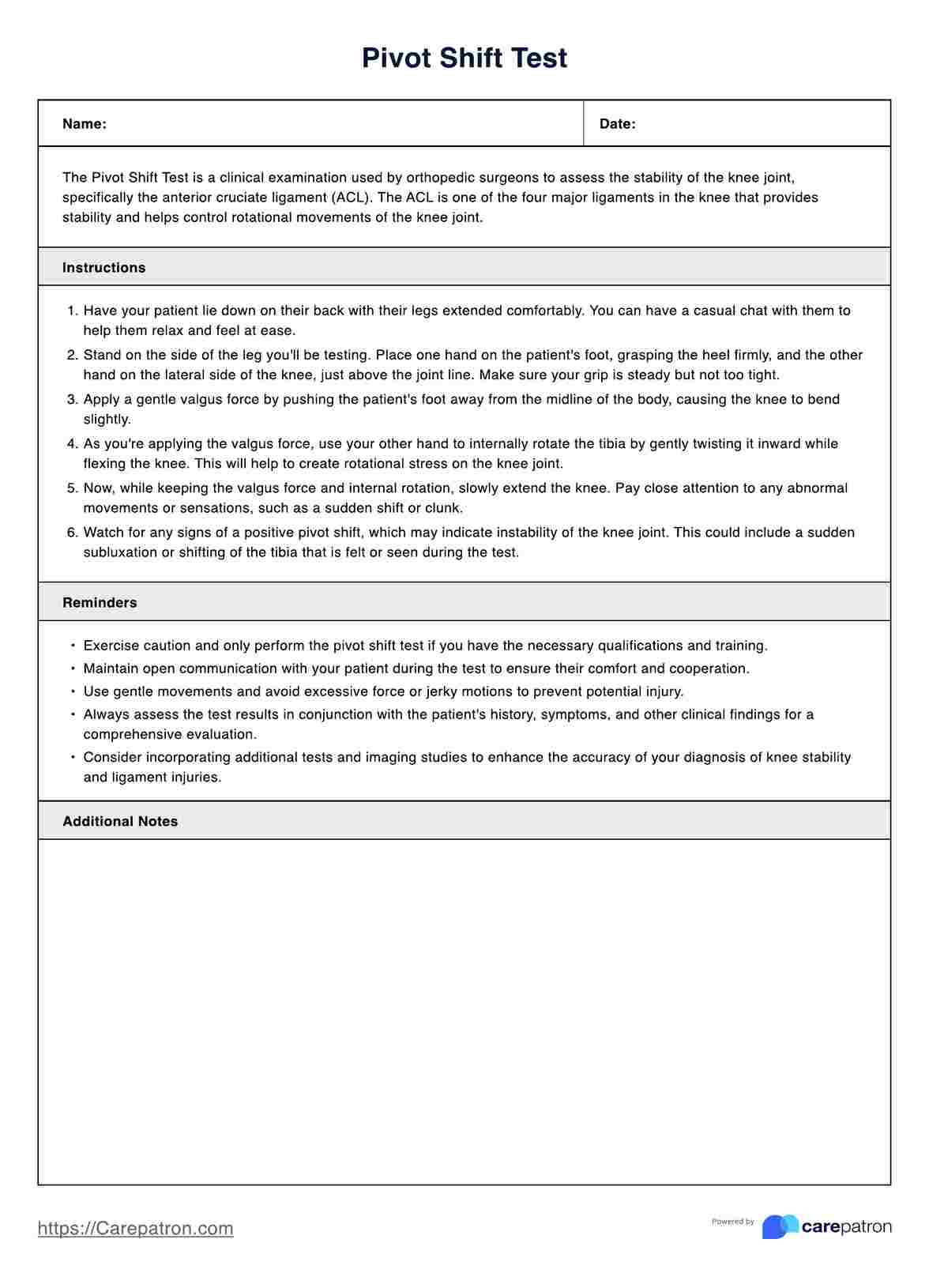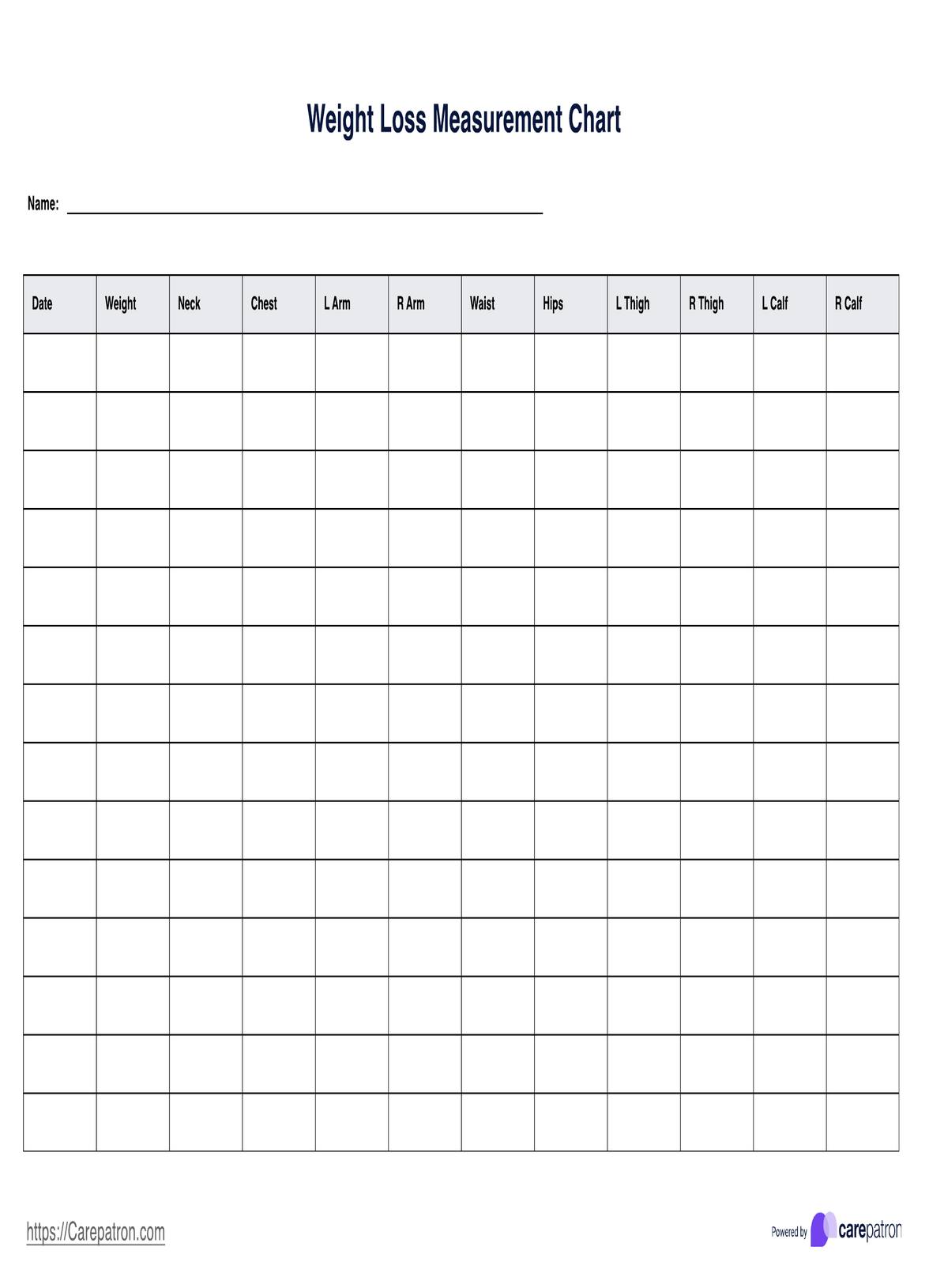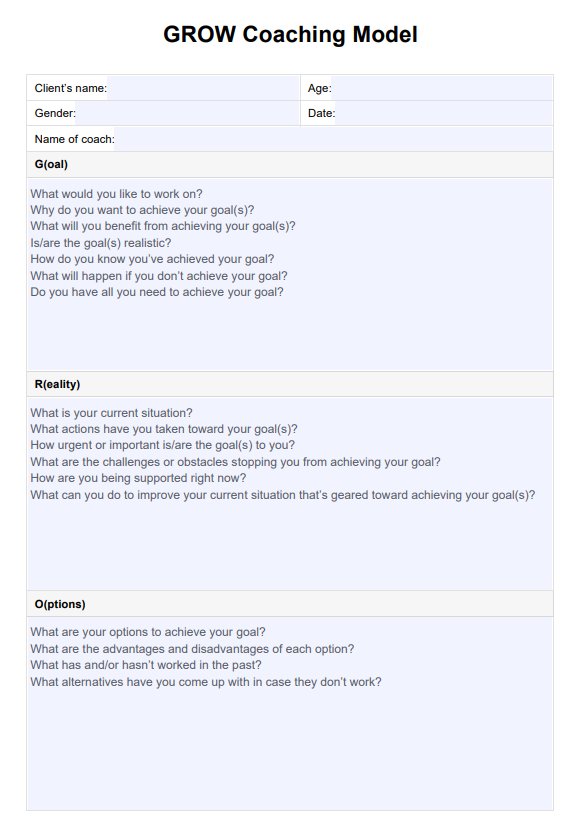Behavioral Regulation In Exercise Questionnaire
Complete the Behavioral Regulation in Exercise Questionnaire (BREQ) to assess your exercise behavior. Download our free PDF to start your journey.


What is Behavioral Regulation in Exercise Questionnaire (BREQ)?
The Behavioral Regulation in Exercise Questionnaire (BREQ) and subsequent versions are widely used measures of behavioral regulations in exercise contexts. These are developed to provide a comprehensive assessment of the different forms of motivation regulations that are largely scaffolded on the concept of self-determination theory.
The primary aim of BREQ is to methodically and accurately assess external, introjected, identified, and intrinsic regulations that impact individuals’ motivation and amotivation about exercise. It incorporates statements that aim to capture environmental and internal sources of motivation among individuals. It helps practitioners understand the underlying motives behind individuals’ exercise behaviors.
The is a flexible tool used across ages, genders, and populations. The wide applicability of these questionnaires enables people from all walks of life to gain insights about factors that impact their exercise behaviors.
These questionnaires can help determine which spheres of an individual’s life influence their exercise motivation. These empowering tools allow individuals to have a deeper understanding of their behaviors. With this understanding, they will be able to target specific domains in their lives that need improvement that, in turn, will guide them in creating and building better habits leading to a more satisfying life.
Behavioral Regulation In Exercise Questionnaire Template
Behavioral Regulation In Exercise Questionnaire Example
How does it work?
Behavioral Regulation in Exercise Questionnaire assesses the different types of motivation that influence individuals’ exercise behaviors. It utilizes self-reports in a structured and quantifiable manner. Despite relying on self-reports, BREQ is a well-developed, efficient, and reliable tool for evaluating behavior regulation.
1. Download a copy of Behavioral Regulation in Exercise Questionnaire
Start your journey by downloading a copy. You may find a printable Behavioral Regulation in Exercise Questionnaire copy on this page or in our resources library. You can usually access this tool for free.
2. Familiarize yourself with the tool
Familiarize yourself with the tool by understanding the purpose and structure of the questionnaire. The BREQ is packed with clear and complete instructions for ease of use. Read them carefully. Apart from that, it is also crucial to understand how the scoring works. BREQ operates on a 5-point scale where 0 means “not true for me” and 4 means “very true for me”. Doing this step is essential for accurate and reliable results.
3. Complete the questionnaire
After clearly understanding the tool's instructions, structure, and scoring, you may start answering. The number of items varies depending on the version of BREQ that you use. The most recent version is the BREQ-3. When answering, read each statement carefully and give yourself enough time to answer them. Best results are achieved when you thoughtfully and honestly answer the items.
4. Interpret the results
Complete your journey by interpreting the results. The scores are understood by getting the weighted scores per subscale before the overall score is solved. Higher scores indicate more self-determined motivation. You do not necessarily need assistance in interpreting the scores, but it is recommended that you ask for help to ensure the accuracy of your interpretation.
When would you use this Template?
The Behavioral Regulation in Exercise Questionnaire is an excellent tool that ensures an accurate assessment of exercise motivation. This is a helpful tool that can be applied in different settings. Here are key settings for the best use of BREQ:
Treatment and Rehabilitation Settings
Professionals in healthcare settings may use BREQ to assess patients’ exercise motivation in rehabilitation and recovery. Understanding patients’ motivation can assist in developing effective plans that can encourage the patients to participate and engage in rehabilitation exercises.
Educational Settings
In educational settings, educators, especially in physical education, can maximize BREQ to understand regulations in exercise that impact their students' performances in the said area. The knowledge provided by BREQ can be incorporated into the curriculum through activities promoting exercise interest.
Public Health and Community Settings
Public health and community organizers may utilize BREQ to gain insights into the exercise motivation of their members and other target populations. These insights can guide designing programs that respond to the community’s needs and promote engagement among their target populations. Moreover, it may assist in policies and initiatives that promote exercise engagement.
Fitness and Sports Settings
In fitness settings, BREQ is a helpful tool for understanding the exercise motivation of clients and athletes. This will allow fitness coaches to design fitness programs that effectively respond to the needs and preferences of their clients, leading to better results and outcomes. For athletes, BREQ explains how motivation impacts their training, performance, and commitment. This will serve as a backbone for developing better training programs for athletes.
Overall, BREQ is a versatile tool applicable to different settings. It should be noted that this tool can be used in settings beyond the ones listed above.
Benefits of Behavioral Regulation in Exercise Questionnaire
Behavioral Regulation in Exercise Questionnaire is packed with advantages that can put you ahead. Here are some key benefits of BREQ that can assist your decision in using this tool:
1. Accessibility
The Behavioral Regulation in Exercise Questionnaire is a free resource that can be accessed and downloaded by anyone interested in learning about behavior regulations. A free copy can also be downloaded from our website.
2. Flexibility
BREQ is a highly flexible tool that can be applied in different exercise settings and across different populations, including adolescents, adults to older adults. It can also be translated and adapted for use in diverse cultural contexts. It has strong psychometric properties that guarantee its reliability, validity, and generalizability.
3. Systematic and Structured Approach
BREQ is a carefully designed tool that follows a structured and systematic approach to evaluating exercise motivation regulation. The includes well-crafted items to capture different forms of behavior regulation, organized into subscales. This approach allows for a consistent and reliable result.
4. Understanding and Predicting Exercise Adherence
BREQ allows individuals to understand the underlying reasons for their exercise behavior. It helps in identifying crucial sources of motivations that influence exercise adherence. This understanding serves as a baseline for predicting behavior and commitment to exercising.
5. Tailoring Exercise Programs
BREQ provides insights into motivation regulations in exercise that can guide exercise professionals in developing exercise programs tailored to the need and preferences of clients. Apart from that, it is a helpful tool for evaluating the effectiveness of tailored programs.
6. Building Better Lives
BREQ empowers individuals by allowing them to make better life choices. The knowledge and insights this tool provides are crucial stepping stones toward building a healthier, stress-free, and happier life.
In conclusion, BREQ is a valuable tool for individuals who want to make tangible and impactful life changes. There is no greater gift than a healthy and happy life.
Research and Evidence
Behavioral Regulation in Exercise Questionnaire was originally developed by Mullan, Markland, and Ingledew (1997) to assess the different forms of behavior regulation in exercise. These forms include external, introjected, identified, intrinsic, and amotivated forms of regulation. The conception of BREQ was largely based on the intrinsic and extrinsic motivation continuum in self-determination theory by Deci and Ryan (1990).
BREQ employs a 5-point Scale from 0 which means “not true for me” to 4, which means “very true for me”. The original version of the questionnaire includes 15 items that are categorized into four subscales. Several items on amotivation were included but were eventually dropped during the preliminary analysis because of high skewness. These items were later brought back in the second modification of the questionnaire—BREQ-2. From 15 items, it incorporated 19 items in the second version with five subscales. The questionnaire was further developed, adding five more items and one more subscale in the third version, the most recent modification.
Different studies have evaluated this tool, where it consistently demonstrated good reliability and validity. BTEQ has shown consistency from internal to test-retest reliability, indicating the stability of this tool over time. Apart from that, BREQ has also exhibited good construct validity, which means it measures what it is meant to measure. Laying its foundations of the self-determination theory, the items are crafted and tailored to capture the concepts of motivation presented in the theory. From its reliability and validity to its structure, this tool displays robust psychometric properties.
The advancement in the body of knowledge—particularly in understanding its theoretical framework—and the thirst for an excellent tool fuel its developers' to continue improving the questionnaire. Each modification signifies higher efficiency.
References
Behavior regulation exercise questionnaire (BREQ). PSYCHOLOGICAL SCALES. (2022, February 21). https://scales.arabpsychology.com/s/behaviour-regulation-exercise-questionnaire-breq/
Cid, L., Monteiro, D., Teixeira, D., Teques, P., Alves, S., Moutão, J., Silva, M., & Palmeira, A. (2018). The Behavioral Regulation in Exercise Questionnaire (BREQ-3) Portuguese-version: Evidence of reliability, validity and invariance across gender. Frontiers in Psychology, 9. https://doi.org/10.3389/fpsyg.2018.01940
Markland, D., & Tobin, V. (2004). A modification to the Behavioural Regulation in Exercise Questionnaire to include an assessment of Amotivation. Journal of Sport and Exercise Psychology, 26(2), 191–196. https://doi.org/10.1123/jsep.26.2.191
Mullan, E., Markland, D., & Ingledew, D. K. (1997). A graded conceptualisation of self-determination in the regulation of exercise behaviour: Development of a measure using confirmatory factor analytic procedures. Personality and Individual Differences, 23(5), 745–752. https://doi.org/10.1016/s0191-8869(97)00107-4
University, B. (n.d.). The Behavioural Regulation in Exercise Questionnaire (BREQ). exercise. http://exercise-motivation.bangor.ac.uk/breq/breqmain.php
Commonly asked questions
The Behavioral Regulation in Exercise Questionnaires is usually used by psychologists, researchers, coaches, fitness instructors, and professionals in healthcare, sports, exercise science, health psychology, and related disciplines.
The Behavioral Regulation in Exercise Questionnaires is usually used in research studies and applied settings such as clinical and health, sports and fitness coaching, and exercise behavior assessments.
The Behavioral Regulation in Exercise Questionnaire is completed by scoring the items from 0, which means “not true for me” to 4, which means “very true for me”. In interpreting the scores, it is best to ask for assistance from professionals for correct and accurate results.


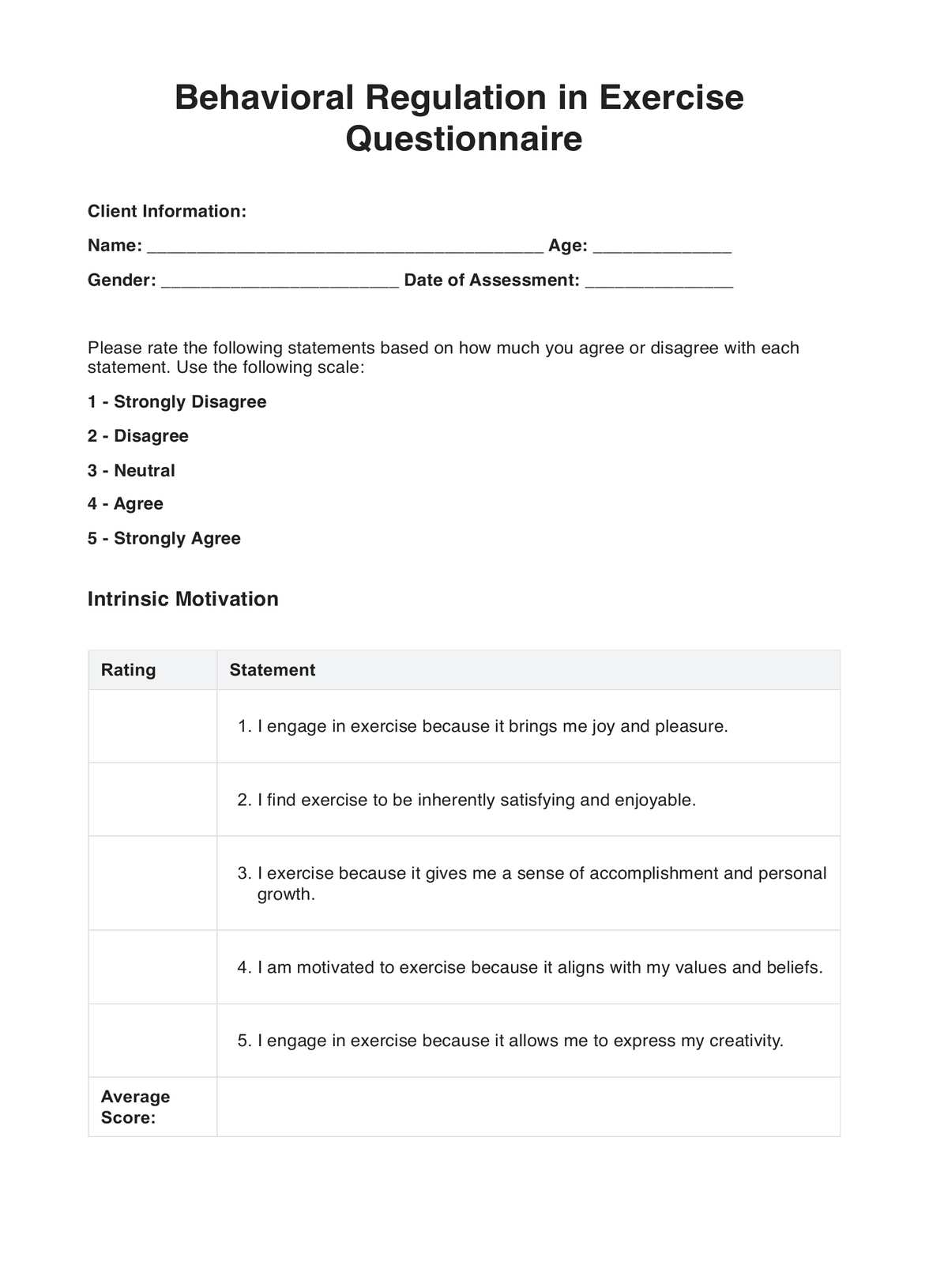
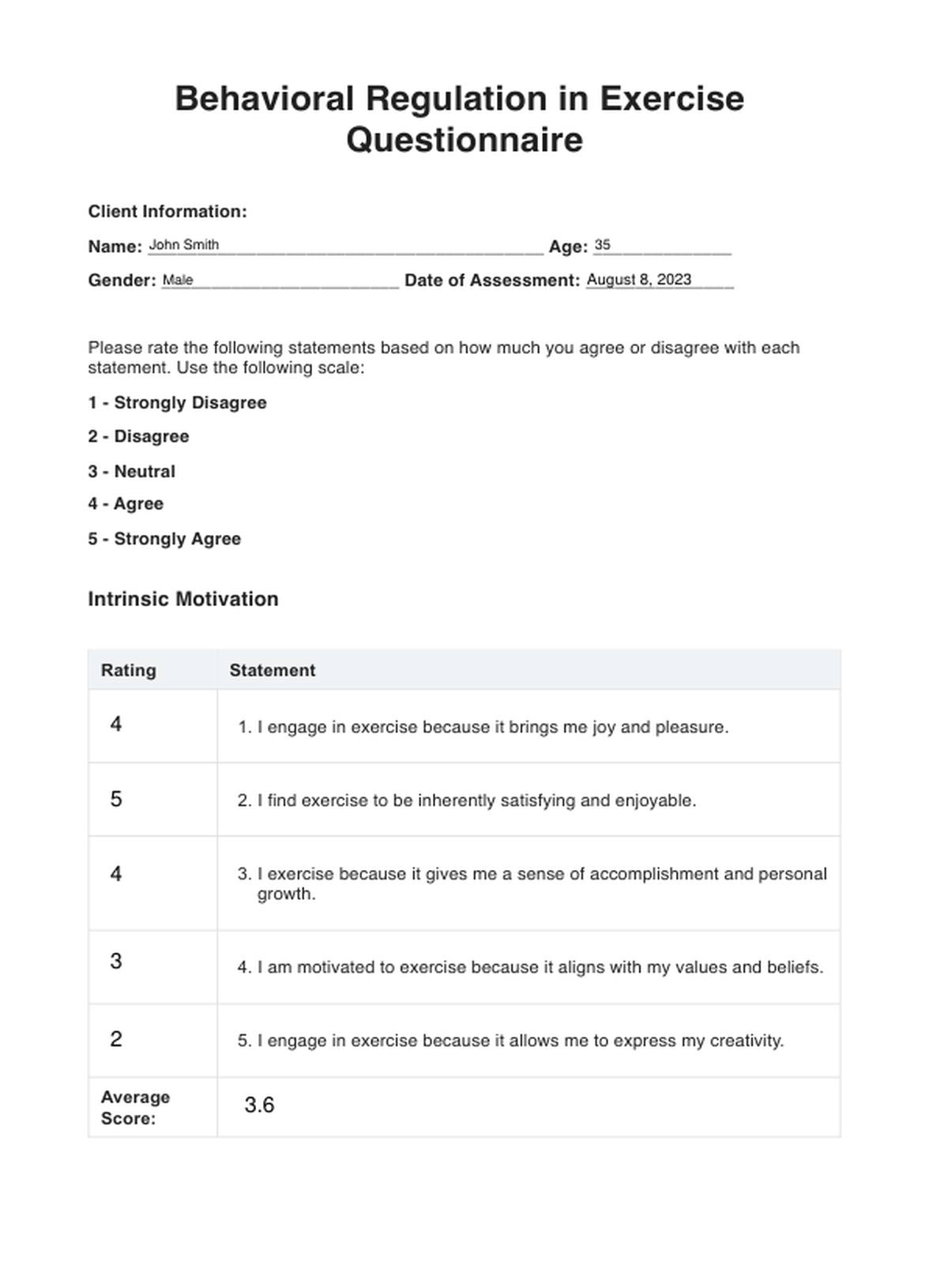
















-template.jpg)



















































































